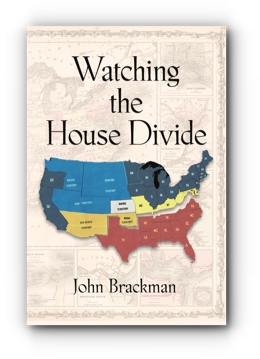| ||||||||||||
| Category: History:United States:Civil War Period |
(requires Adobe Reader)
|
| About the Book | |
|
In 1860, the country was once again having a presidential election. This election and its results would prove to be one of the most contentious of any that the United States had ever faced since becoming a nation. John Brown had attempted a slavery revolt which caused concern because it went beyond the normal abolition methodology of speeches and editorials degrading slavery. But the revolt had been quickly put down and John Brown had been hung. As the year progressed however, it became very clear that the security of the country was changing; minds were being hardened and sides were being chosen. This change initially manifested itself in the Democratic Presidential convention. The old Democrat Party was torn in two by the failure of the northern and southern Democrats to agree on a platform and a candidate, so consequently two Democrat Party conventions emerged and two Presidential Democratic candidates were on the ballot. However, the new Republican Party, its candidate Abraham Lincoln, and its platform of no slavery in the territories had found a following in the northern states. And to further complicate matters, a fourth party emerged, named the National Union Party, with its slogan. “The Union, the Constitution and the Enforcement of the Laws,” and put forth its own candidate. The election of Abraham Lincoln was seen by the South as a sectional victory for the abolitionists who favored the elimination of slavery. Although the Republican Party platform did not have a plank of slavery elimination, it did have a plank stating that slavery was to be excluded from the territories. The South saw this as an unconstitutional act and also believed that a Republican administration would actively work to eventually eliminate slavery everywhere and consequently, destroy their way of life. So, the southern states began utilizing the method they had threatened since the administration of Andrew Jackson, which was secession. The act of dissolution which most citizens had never seriously considered was now being actively utilized by the slave-holding states. The country immediately looked for solutions to resolve their differences, but these solutions generally involved amending the Constitution in ways beneficial only to the slave-holding states. The Republicans, having just won an election were in no mood to compromise and the seceded states had no inclination to return to the Union they had just left. In addition, the two sections of the country began gearing up for war; the South especially needed the armaments and property that the U.S. Government held on their soil. So, the engagement of wills coalesced at Ft. Sumter; the vital coastal defense and customs facility snuggled squarely in the Charleston harbor. Both sides showed their mettle here and the country slid into the abyss; not emerging as a new nation for four years and after the lives of almost three-quarters of a million men were extinguished. All of these events were printed in the numerous local newspapers which the average citizen relied upon for local news, state news and national news. But the various newspapers were generally edited to present the local editors views on the various subjects under consideration which influenced their readers. There were generally three views, depending in what section of the country you lived. The South was pro-slavery; the North was generally anti-slavery and the Border States could fall into both categories, depending on location. This book is the story of how five of those newspapers reported these happenings to a worried and divisive nation.
|
|
| About the Author | |
 |
John Brackman’s hometown is Concordia Missouri. John is a resident of Kansas City Missouri, married to Ruth, his wife of 47 years. They have three sons, two daughter-in-law’s and three grandchildren. John is a member of the Jackson County Historical Society and The State Historical Society of Missouri. |

